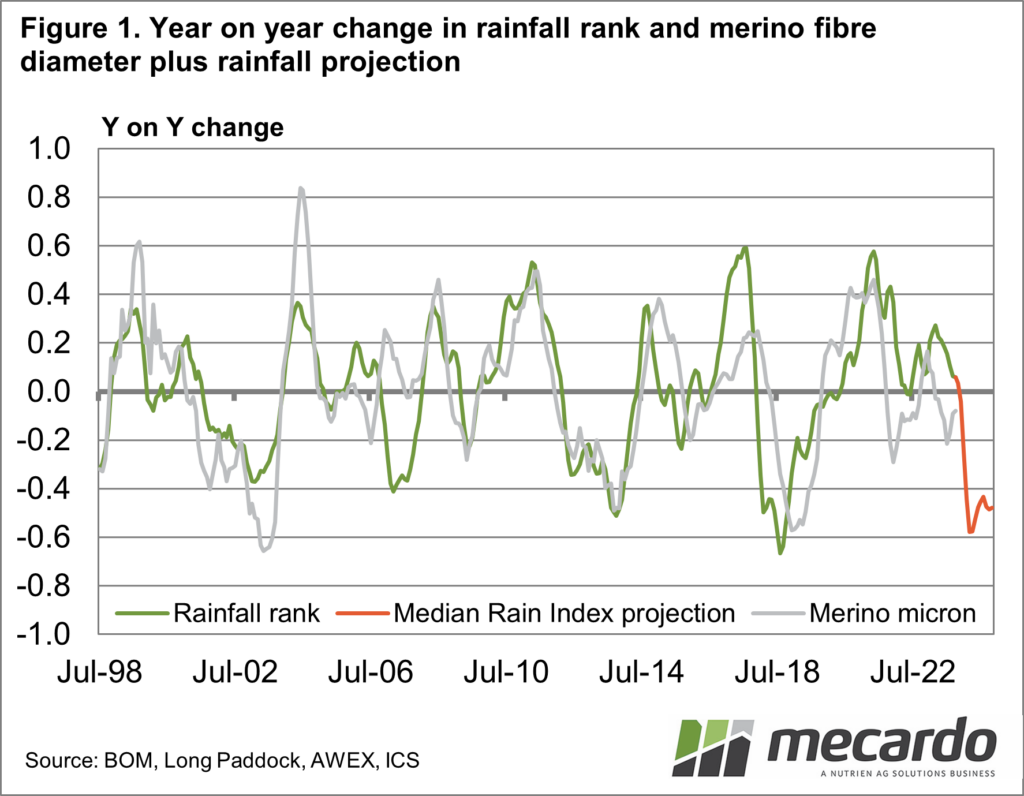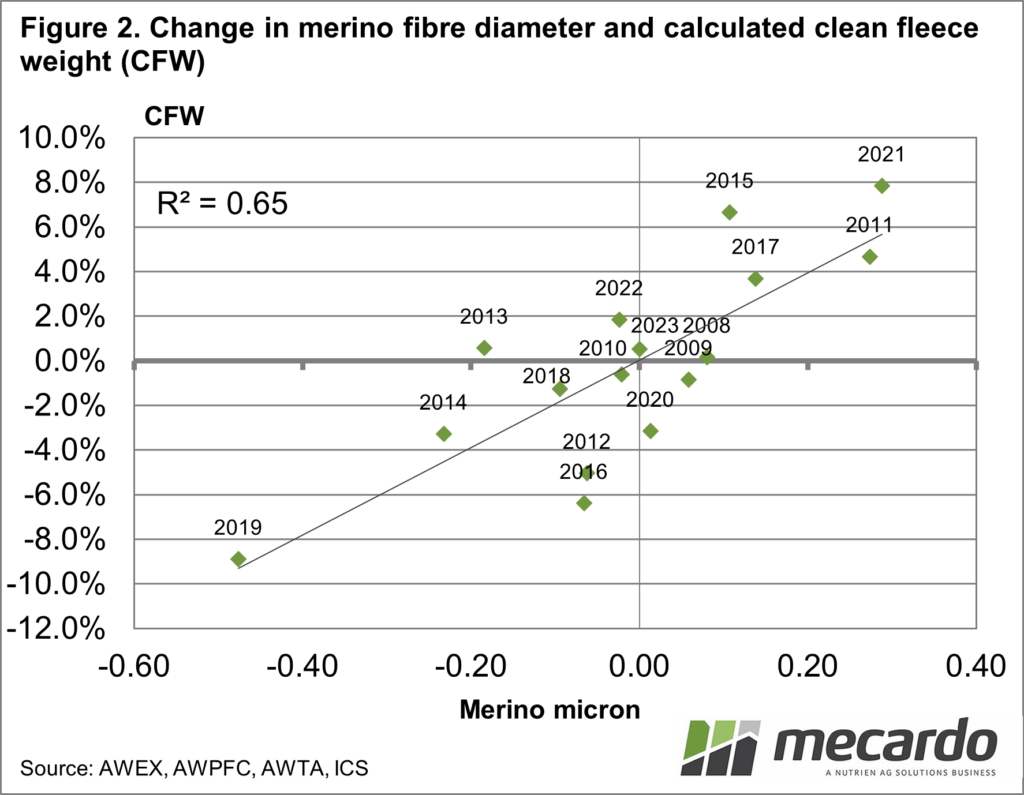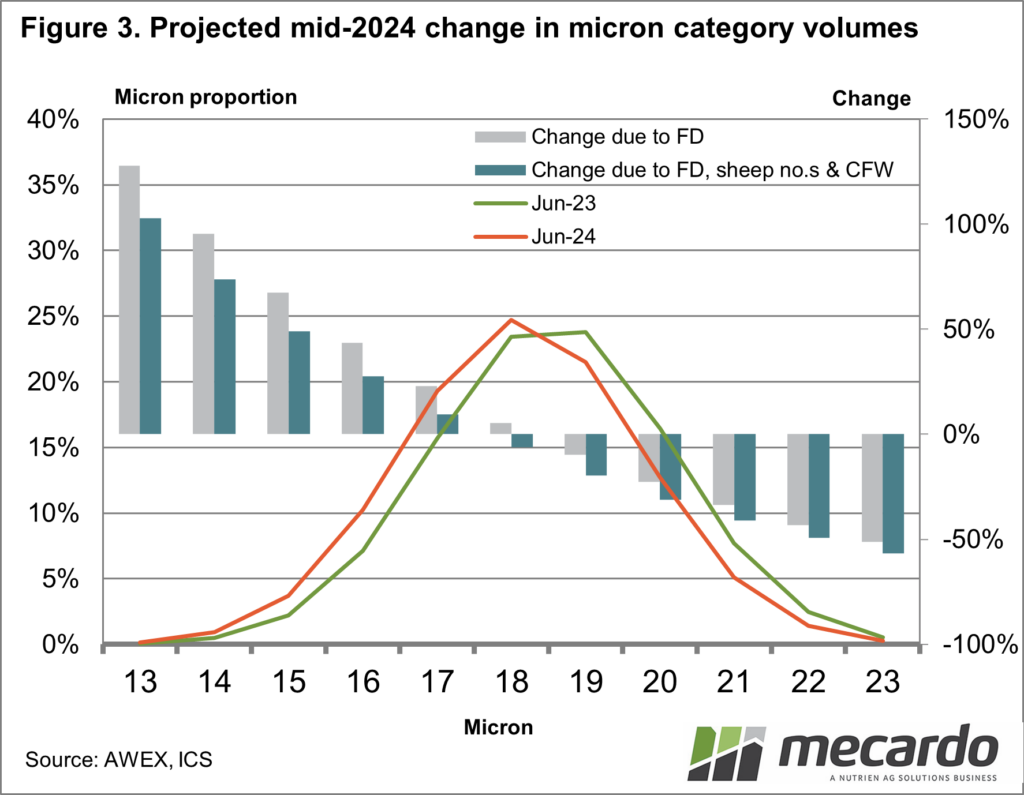In the six months to October, the six-month median rainfall for Merino regions around Australia came in at a low 21st percentile, reflecting the very dry spring. November rainfall has dragged the six-month percentile back to the 30th percentile but the effect of the dry 2023 spring will be felt through till mid-2024 at least. This article investigates the projected effect of this on the Merino clip in 2024.
As wool reflects the seasonal conditions it
was grown in and most wool is harvested after a 12-month growing period, we
have advanced warning of changes in wool quality (and to a degree quantity).
Varying seasonal conditions between regions can and often do negate changes
from other regions, which keeps quality changes in the Australian Merino clip
as a whole from being extreme. In cases where extreme seasonal conditions are
common across many regions, as with the recent dry winter/spring, we have a
good idea that quality in the clip as a whole in the six to nine months
following the spring is going to be strongly affected.
Figure 1 shows the year-on-year change in a
rolling 12-month rainfall rank (weighted for wool production between different
regions across Australia) plus a 12-month projection of this rainfall rank,
using historical (from the past 40 years) median rainfall levels, running from
1998 to 2024. Compared to the change in rainfall rank is the year-on-year
change in a detrended Merino average micron series, which runs to November. The
schematic shows changes in the merino fibre diameter to be highly correlated
with changes in rainfall. While there is no great surprise in this correlation,
it does allow a measure of forecast using median rainfall levels. The projected
rainfall rank in Figure 1 points to the merino micron falling year on year by
around 0.4 to 0.6 micron, on par with similar cycles in 2003, 2013, and 2018.
A shift finer in the merino micron
distribution as suggested by Figure 1 has implications for the supply of fine
and broad merino micron categories in 2024. It also has implications in terms
of volume as clean fleece weight tends to be positively correlated to fibre
diameter.
Figure 2 compares the annual change in a
calculated clean fleece weight for the Australian clip (using a mix of AWTA
data and flock size estimates) and the change in the average merino fibre
diameter of wool sold at auction. From this schematic, the relationship is a half-micron
change in the fibre diameter equates to a 10% change in clean fleece weight.
When considering wool volumes the most
obvious factor to consider is sheep numbers. At this stage adult sheep
slaughter numbers, while well up on recent years as is the flock, are not
running at levels pointing to a big drop in the flock. For the purposes of this
exercise, we will assume a minor drop in sheep numbers of only 3% in 2024.
Figure 3 looks at the merino clip in
mid-2024, assuming a year-on-year drop in the merino fibre diameter of 0.4
micron, a consequent drop in clean fleece weights of 8% and sheep numbers lower
by 3%. The lines show the micron distribution for June 2023 and June 2024
(projected) while the bars show the change by micron category due to the shift
in the micron distribution (FD) and the change due to FD, clean fleece weight
and sheep numbers. The shift in the micron distribution is the dominant factor
for the broader and finer micron categories, while clean fleece weight and
sheep numbers are the key factors for 18-19 micron.
In essence, the supply of 16 micron and
finer wool will be ample in 2024, while the supply of 19 micron and broader
merino wool will be constrained, with a small fall in the 18-micron category
volume. This will help support broader merino prices and continue to downward
pressure on fine merino premiums.
What does it mean?
The bigger cycles and trends in the Merino market are driven by the demand side, except for those occasions when big wool stockpiles are finally liquidated (as after mid-2001). Changes in supply show up in changes in relative prices of different wool categories, and the price structure of the market.
Given the dry winter/spring of 2023, we can expect changes in the micron distribution of the Merino clip in 2024 and with it pressure to flatten the Merino micron curve and also a lack of supply supporting broader Merino prices.
Have any questions or comments?
Key Points
- The impact of the 2023 dry spring on the Australian Merino clip will play out in the first half of 2024 and perhaps into the second half, depending on rainfall in the coming quarters.
- Expect the Australian merino clip to be finer in 2024, with lower clean fleece weights.
- As usual the impact of the shift in the Merino micron distribution will be most felt in micron categories the furthest away from the average (18.5 micron)
Click on figure to expand
Click on figure to expand
Click on figure to expand
Data sources: BOM, Long Paddock, AWEX, AWTA, ICS, Mecardo















